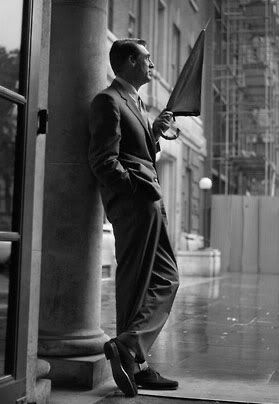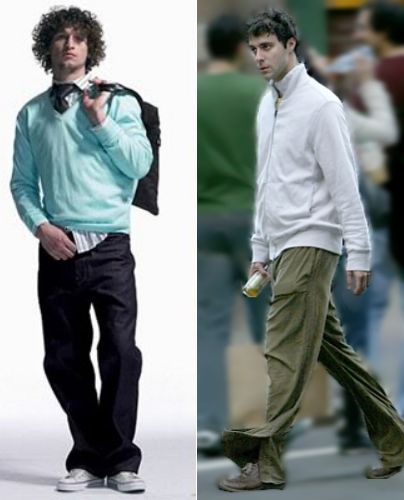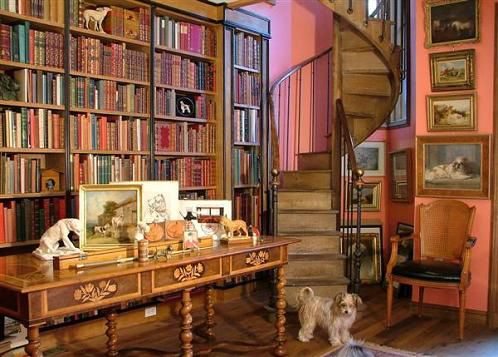 Cary Grant
Cary Grant
Photo by Harry Benson
1957Cary Grant On StyleGentlemen's Quarterly, Winter 1967/68
[Reprinted in the April 2013 issue of GQ]
By Cary Grant
I'm often asked for advice or an opinion about clothes, and I always try to answer the best I can, but I'm not inclined to regard myself as an authority on the subject. Many times during my years in films, some well-meaning group has selected me as best-dressed man of the year, but I've never understood why. The odd distinction surprises me: first, because I don't consider myself especially well dressed, and, secondly, I've never, as far as I can compare the efforts of others with my own, gone to any special trouble to acquire clothes that could be regarded as noticeably fashionable or up-to-date.
Some of my suits are ten to twenty years old, many of them ready-made and reasonably priced. Those that were custom-tailored were made by many different tailors in many different cities: London, Hong Kong, New York and Los Angeles. I believe that American ready-made clothes are the best ready-made clothes in the world: that the well-dressed American man makes a better appearance than the well-dressed man of any other country.
No, it isn't only money that determines how well a man dresses—it's personal taste. Because of the demands of my work, I've purchased dozens of suits over the years and they all have one attribute in common: they are in the middle of fashion. By that I mean they're not self-consciously fashionable or far out, nor are they overly conservative or dated. In other words, the lapels are neither too wide nor too narrow, the trousers neither too tight nor too loose, the coats neither too short nor too long. I've worn clothes of extreme style, but only in order to dress appropriately for the type of character I played in particular films. Otherwise, simplicity, to me, has always been the essence of good taste.
I believe men's clothes—like women's—should attract attention to the best lines of a man's figure and distract from the worst. In all cases, the most reliable style is in the middle of the road—a thoughtful sensible position in any human behavior. Except perhaps on the freeway—but, even then, the middle lane, providing of course, it's on your side of the road, usually gets you where you're going more easily, comfortably, and less disturbingly. And so it should be with clothes. They should be undisturbing, easy and comfortable.
There are many established stores or haberdasheries in each city, and probably in your neighborhood. Look at the suits in the windows. See how they compare with those worn by men whose taste you respect and admire. Think about the practical, functional and long-wearing qualities as they apply to your particular job or social activities. It's better to consider carefully before buying than to regret your purchases for months afterwards. Study the cut, the price.
And here, by the way, is a tip. If the sleeves seem disproportionately wider than customary, it indicates a very deep armhole. Don't contemplate buying if you are of average or slim size—you'll get a well-fitting back but an extremely loose-fitting front and sleeves that tend to ride up if you lift your arms. A deep armhole is popular with many manufacturers because each coat fits a wider range of customers.
How much on should pay depends on how much one has to spend. I'm reminded of a piece of advice my father gave me regarding shoes: it has stood me in good stead whenever my own finances were low. He said it's better to buy one good pair of shoes than four cheap ones. One pair made of fine leather could outlast four inferior pairs, and, if well cared for, would continue to proclaim your good judgment and taste no matter how old they become. The same applies to suits, so permit me to suggest you buy the best you can afford even though it means buying less. Rather like the stock market: it is usually more sensible to buy just one share of blue chip than 150 shares of a one-dollar stock.
What should one buy? Well, if a man's budget restricts him to only one suit, then I would choose something unobtrusive. A dark blue, almost black, of lightweight cloth, serviceable for both day and evening wear. I suggest lightweight because nowadays most restaurants, offices, shops and theaters are well heated during fall and winter. I found that so even, surprisingly, in Moscow. With such modern indoor comfort, one need only be concerned with cold weather while out-of-doors.
Which brings us to overcoats. I've learned to wear overcoats that button up to the neck yet still appear neat when left open. It mystifies me that some men wear heavy single-breasted and even double-breasted, overcoats to protect themselves from cold, yet expose the most vulnerable part of their chests with V-neck openings. By wearing an overcoat that buttons to the neck, there is no need for a scarf.
The topcoat I use for traveling can be worn spring or fall. It's black and therefore not only less apt to show dirt and travel stains, but usable for both day and formal wear. It's made of a gabardine-type waterproof material, with slash side pockets that enable one to reach through easily for change, or to carry a book, or something similar, protected from the rain. There is also a detachable lining that buttons inside for very wintery days. An all-purpose coat.
What about a second suit? Well, I think a grey worsted or flannel would be most serviceable. Not too light in color, not too dark. And, this time, of medium weight but not more than what is known as ten-ounce cloth. It might be advantageous to purchase an extra pair of trousers for wearing separately with a sweater or a sport shirt. A grey flannel suit, with or without extra trousers, together with a sport coat could, at a pinch, be sufficient for a weekend in the country.
A sport coat ought to be easy-fitting, its pattern neither loud nor flashy. If you're unsure which plaid or check to choose, then one of those dark blue, single-breasted blazers that have been worn by all classes in England for years, and have since become popular here, is acceptable for most casual wear.
Except, of course, on very hot days. During summer I've taken to wearing light beige, washable poplin suits. They're inexpensive and, if kept crisp and clean, acceptable almost anywhere at any time, even in the evening. Also, the coat can be worn with grey flannels at the seashore or in the country, and the trousers used separately with a sport shirt and moccasins, or a pair of those heavy-soled white canvas shoes that are popular with young college men.
Poplin or seersucker suits are the mark of no special social class or income group, but are worn by all. And, providing he is well-mannered, a young man wearing such a suit can confidently approach the other fellow's girl, secure in knowing that his way of dress is no deterrent.
A cardigan coat sweater of lightweight wool and conservative color is a useful investment. It can be worn without a coat on many occasions, and has the advantage of being easily slipped on without those arm-raising contortions and the need to re-comb your hair.
How do I feel about ties? If I had only one to choose, then I think a black foulard, not too wide nor too narrow, is best, as it's acceptable with most clothes. An expensive tie is not a luxury—the wrinkles fall out quicker and the knot will hold better. Personally, I wear ties of small, conservative pattern and color.
Shoes? I've already mentioned that good shoes look better and last longer. If a man must limit himself to only one pair of shoes for city wear, then they should be black. If two, then a brown pair of darkest chocolate color are useful with almost all suits and, if he has no moccasins, even with grey flannels. The moccasin type of shoe is, to me, almost essential and especially convenient when traveling, since they can be easily slipped off in the airplane or car.
If your pocket handkerchief is monogrammed, don't wear it carefully folded to show the monogram peeking above your breast-pocket. That's somehow ostentatious.
Shirts should usually be white for the evening, but, in the city's grime, it's practical and permissible to wear a light blue or conservatively striped shirt during the day. The type of collar should suit the contours of the neck and face. As a younger man, I tried wearing a flared, too-high collar that, although modish amongst those I regarded as the sophisticates of that day, looked ridiculous on my 17 1/2- inch neck. Luckily, after the embarrassment of viewing myself from almost every angle on screen, that mistake was soon rectified. Button-cuffed shirts are simplest to manage, but if you wear cuff links, as I do, don't, I beg you, wear those huge examples of badly designed, cheap modern jewelry. They, too, are not only ostentatious, but heavy and a menace to the enamel on your car and your girl friend's eye.
Learn to dispense with accessories that don't perform a necessary function. I use belts, for example, only with blue jeans, which I wear when riding, and content myself with side loops, that can be tightened at the waistband, on business suits.
A tip about trousers. Trouser cuffs seem to me unnecessary, and are apt to catch lint and dust. However, whether you prefer cuffs or not, ask the tailor to sew a strip of cloth of the same material, or a tape of similar color, on the inside at the bottom of the trouser leg where it rubs the heel of the shoe. It will keep your trouser-bottoms from fraying.
Do I have any special do's and don't's about clothes? I can't think of and rules about clothes, since there really aren't any, but I suggest you buy trees to conform to the shape of your shoes, and keep your coats on curved hangers.
Take care of your clothes, keep them clean and in good repair. I suggest you avoid using heavily scented cologne or soaps. When I meet a man I like him to smell like a man, or not to smell at all; certainly he shouldn't smell like a woman. Do see that your socks stay up. Nothing can spoil an otherwise well-groomed effect like sagging socks. Don't stuff your pockets with heavy articles and bulging wallets filled with seldom-used cards. They ruin not only the neatness of your appearance but the actual tailoring of your suit.
Don't be a snob about the way you dress. Snobbery is only a point in time. Be tolerant and helpful to the other fellow—he is yourself yesterday.
Don't overbuy. When you contemplate an article, judge whether or not it harmonizes with items you already own. Again, avoid exaggeration of current fashions. It's best to be inconspicuous. But inconspicuous does not mean dull. Extreme dullness can be conspicuous in itself. Just do the best you can.
Come to think of it, who knows how anything becomes bad or good taste? Who decides a standard of esthetics? If it's the majority, then how is it the minority are the ones considered well dressed? Everything is only exactly what it is. If a man wears the kind of clothes that please him, then, providing they're clean and don't shock society, morals, and little children, what is the difference as long as that man is happy?
Any other thoughts on clothes?
Yes. Somewhere I read that Harvard's Professor Archibald MacLeish was asked by a student about to graduate into our highly competitive world what advice he could give him. Professor MacLeish's answer was, "Wear your Sunday suit every day." The inference, of course, being that the suit would give the young man such confidence in seeking positions that he would eventually own many Sunday suits, for any and all days.
Splendid advice even by itself, but it's probable that the professor meant not only his Sunday or best suit, but also his Sunday or best smile, disposition, and behavior—knowing that each begets the other. So wear, not only your clothes, but yourself, well, with confidence. Confidence, too, is in the middle of the road, being neither aggressiveness nor timidity. Pride of new knowledge—including knowledge of clothes—continually adds to self-confidence.
-------------------------------------------------------------------------------------------------------------------------------------------------------------
Posted By: Kidist P. Asrat
-------------------------------------------------------------------------------------------------------------------------------------------------------------














